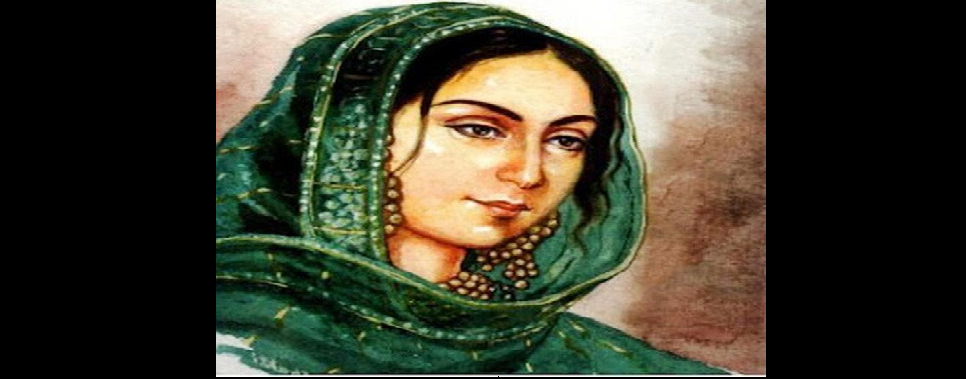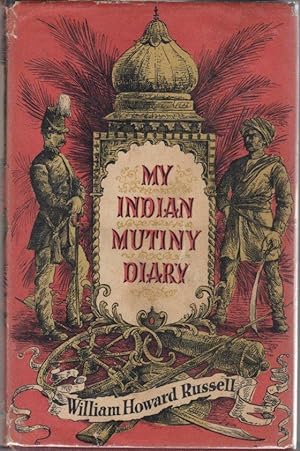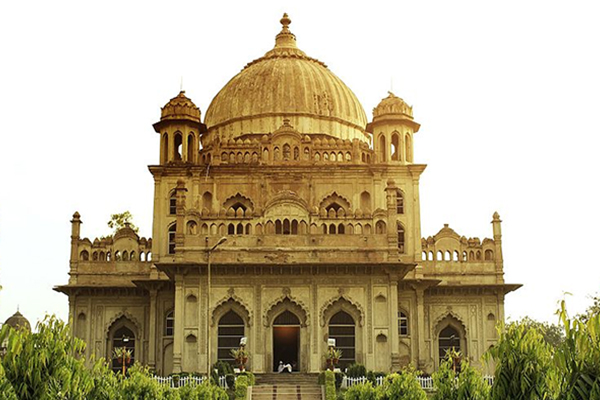“…it is only necessary to remember that Hindoostanee rulers are altogether kind and merciful. Thousands have seen this, millions have heard it. No one has ever seen in a dream that the English forgave an offence.”
– Begum Hazrat Mahal

A perceptive ruler, a brave warrior and an intelligent woman, Muhammadi Khanum, better known as Begum Hazrat Mahal was a woman ahead of her time. With her sense of responsibility, strong will, and an identity beyond her husband, she was one of the most important forces to resist the British during the first war of Independence in 1857. She stood her ground in the battlefield and also among her allies when they objected to a woman taking on the roles.
Begum Hazrat Mahal was born in 1820. Her father was in the army and after her mother passed away, her aunt became her guardian. Call it a tragedy or a beginning of an era, her aunt sold her to a port agent instead of taking care of her. She became a royal courtesan in the court of Wajid Ali Shah, the last ruler of Awadh after a brief dance training. Muhammadi was young and beautiful, she rose in ranks swiftly and became the King’s favourite. Wajjid Shah married her but divorced her later on his mother’s insistence.
Begum Hazrat Mahal was the female face of India’s first war against the British in Lucknow. In 1856, when the British seized the kingdom of Awadh, its Nawab was expatriated to Calcutta with his wives and the rest of the family. Begum Hazrat, in spite of being the divorced wife of the Nawab stayed back and took charge of fighting the British. Her spontaneous response was to put forward her 12 years old son to take the throne, while she ruled as a regent.
She was admired for her courage and bravery by her friends as well as her adversaries. Howard Russel, an Irish journalist for the Times writes in his book ‘My Diary in India, in the year 1858-9’’ mentioned,
“She was a woman of great energy and ability. Begum Hazrat Mahal declares underlying war against us, and in circumstances of the annexation of the kingdom … She has many grounds for her indignant rhetoric.”

Image source: abehbooks
Despite reservations from her critics, Hazrat Mahal used to attend all the meetings and was known to take bold decisions. In fact, in the battle of Alambagh, she fought like a warrior and reclaimed a part of her kingdom from the East India company. In another battle (Battle of Musabagh), she led an army of 9000 soldiers to victory. In each of her battles, she acknowledged the support of Raja Mann Singh and her soldiers which was one of the reasons that she was liked by her troops and all the royal supporters.
When Sir Campbell eventually conquered Awadh and forced her to retreat, but did not surrender. The Britishers then offered her a large sum of money to give up her claim to Awadh Begum Hazrat Mahal refused the offer. She decided to leave the country but continued to organise attacks on British military centres for two years.
She lived in Kathmandu for sixteen years, refusing to surrender to the British and died in 1879. She died in utter poverty, unrecognised and unacknowledged. Before she passed away she wrote a heartfelt poem dedicating to the nation she could not enter due to the British.
“ The desire to see my country free
Did not let me rest in peace
Though the atrocities grew day by day
I kept your flag fluttering proudly in the skies
..."

Image source: Wikipedia
Although she could not end the colonization, she sparked the Great Indian Rebellion of 1857 with her participation. This rebellion provoked many other protests for years and became a key moment in the Indian freedom struggle. Begum Hazrat Mahal along with Rani Lakshmibai, challenged the patriarchal mindset that only men could be warriors. She became an inspiration for several women freedom fighters of her time and beyond, until ‘British India’ became ‘The Republic of India’.

Image Source: tourmyindia.com
Kenize Mourad, author of The city of Gold and Silver, Begum Hazrat Mahal’s biography says that “It unfortunately and unfair that she has been forgotten in India”

Further reads(Books):
- The city of gold and silver by Kenize Mourad
- The Last King in India, by Rosie Llewllyn-Jones
- My diary in India by William Howard Russell
Watch: https://www.youtube.com/watch?v=sCh7P-fKh6Y
References:
- The Awadh proclamations during 1857-58, Published in Indian History Congress by Iqbal Husain
- The citizen.
- http://oudh.tripod.com/bhm/bhmproc.htm
Very beautiful inspirational article…
I really admire such woman who took a stand for themselves… ?
Very beautuful inspirational article…